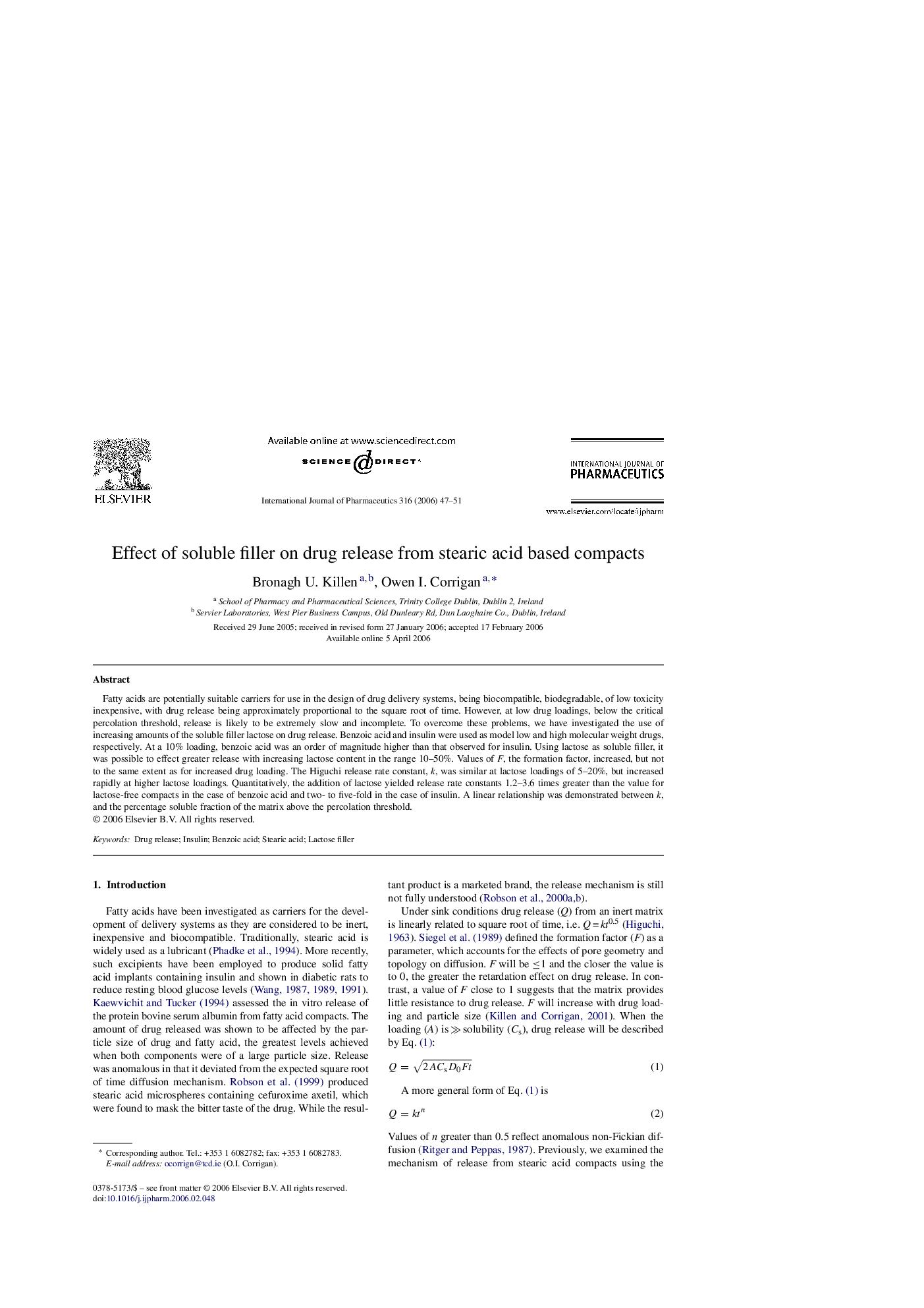| Article ID | Journal | Published Year | Pages | File Type |
|---|---|---|---|---|
| 2506944 | International Journal of Pharmaceutics | 2006 | 5 Pages |
Abstract
Fatty acids are potentially suitable carriers for use in the design of drug delivery systems, being biocompatible, biodegradable, of low toxicity inexpensive, with drug release being approximately proportional to the square root of time. However, at low drug loadings, below the critical percolation threshold, release is likely to be extremely slow and incomplete. To overcome these problems, we have investigated the use of increasing amounts of the soluble filler lactose on drug release. Benzoic acid and insulin were used as model low and high molecular weight drugs, respectively. At a 10% loading, benzoic acid was an order of magnitude higher than that observed for insulin. Using lactose as soluble filler, it was possible to effect greater release with increasing lactose content in the range 10-50%. Values of F, the formation factor, increased, but not to the same extent as for increased drug loading. The Higuchi release rate constant, k, was similar at lactose loadings of 5-20%, but increased rapidly at higher lactose loadings. Quantitatively, the addition of lactose yielded release rate constants 1.2-3.6 times greater than the value for lactose-free compacts in the case of benzoic acid and two- to five-fold in the case of insulin. A linear relationship was demonstrated between k, and the percentage soluble fraction of the matrix above the percolation threshold.
Related Topics
Health Sciences
Pharmacology, Toxicology and Pharmaceutical Science
Pharmaceutical Science
Authors
Bronagh U. Killen, Owen I. Corrigan,
